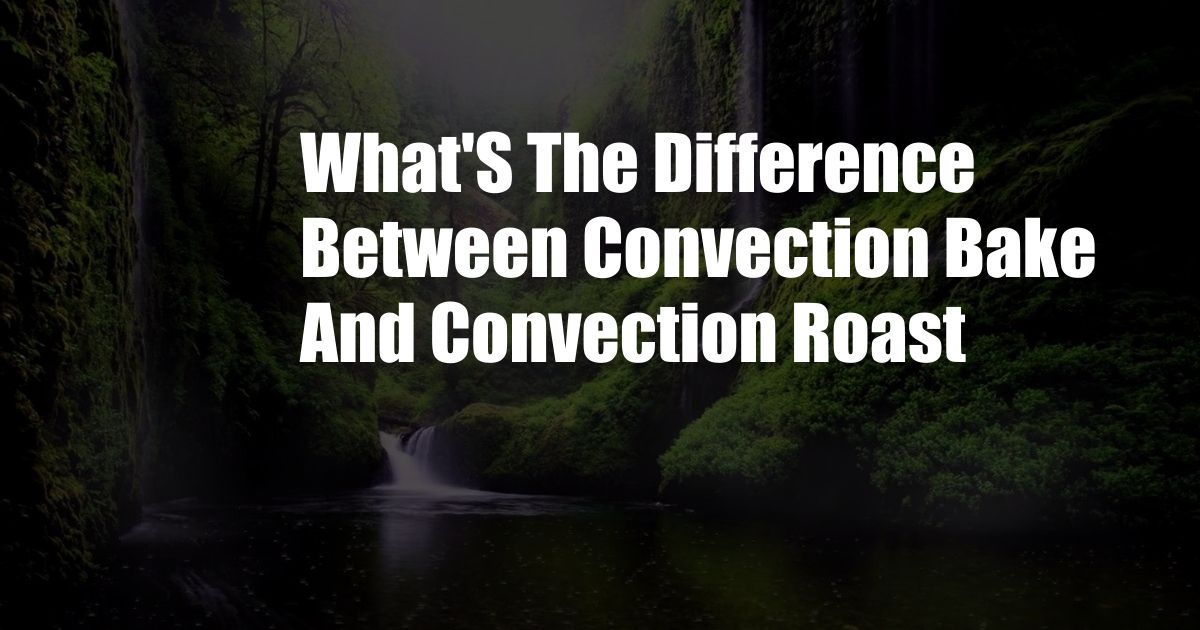
The Difference Between Convection Bake and Convection Roast: Unlocking the Secrets of Your Oven
“I love baking, but my oven always seems to overcook the edges and leave the center undercooked. What am I doing wrong?” For years, this was a common question that plagued me until I uncovered the magical difference between convection bake and convection roast. Embark on a journey with me as we delve into the depths of these two cooking modes and unlock the secrets to culinary perfection.
Convection Baking: An Even Heat Distribution
Convection baking utilizes a fan to circulate hot air throughout the oven, ensuring an even distribution of heat. This consistent temperature allows for faster and more uniform baking, eliminating hot spots and cold zones. The result? Perfectly golden-brown crusts, fluffy interiors, and evenly cooked goods from edge to edge.
Convection Roasting: The Symphony of Heat and Airflow
Convection roasting takes the principles of convection baking and amplifies them. In addition to circulating hot air, a convection roasting oven also blasts hot air directly onto the food. This intense airflow promotes rapid caramelization on the surface, creating a tantalizing crust while locking in the juices and flavors. Roasts, poultry, and vegetables alike emerge tender, juicy, and bursting with flavor.
Understanding the Differences: Key Distinctions
Cooking Speed: Convection cooking speeds up the cooking process by circulating hot air, reducing the time required by up to 25%.
Crust Formation: Convection baking promotes even browning, while convection roasting creates a crispy, golden-brown crust due to the direct heat exposure.
Moisture Retention: Convection roasting locks in moisture more effectively than convection baking thanks to the intense airflow that seals in juices.
Food Placement: When using convection modes, it is crucial to place food on the middle rack to ensure optimal airflow.
Embracing Convection Cooking: Tips and Expert Advice
- Minimize overcrowding: Allow ample space between items to ensure even heat circulation.
- Adjust cooking times: Reduce cooking times by 10-15% when using convection modes.
- Monitor internal temperatures: Use a meat thermometer to ensure doneness, as foods tend to cook faster in convection ovens.
- Cover edges: Protect delicate edges of baked goods from overbrowning by covering them with aluminum foil halfway through the cooking process.
Frequently Asked Questions on Convection Cooking
Q: Can I use convection baking and roasting for all types of food?
A: Yes, but these modes are particularly beneficial for large roasts, poultry, and baked goods.
Q: What are the drawbacks of convection cooking?
A: Convection ovens tend to dry out food more quickly, so it is important to adjust cooking times and monitor food closely.
Q: Can I convert my regular oven to convection mode?
A: No, regular ovens lack the fans and airflow necessary for convection cooking.
Conclusion
The difference between convection bake and convection roast lies in the power of airflow. Convection baking evenly distributes heat for perfect baking, while convection roasting intensifies the heat for juicy, flavorful roasts. Embrace these cooking modes and unlock your culinary potential. Are you ready to elevate your cooking?